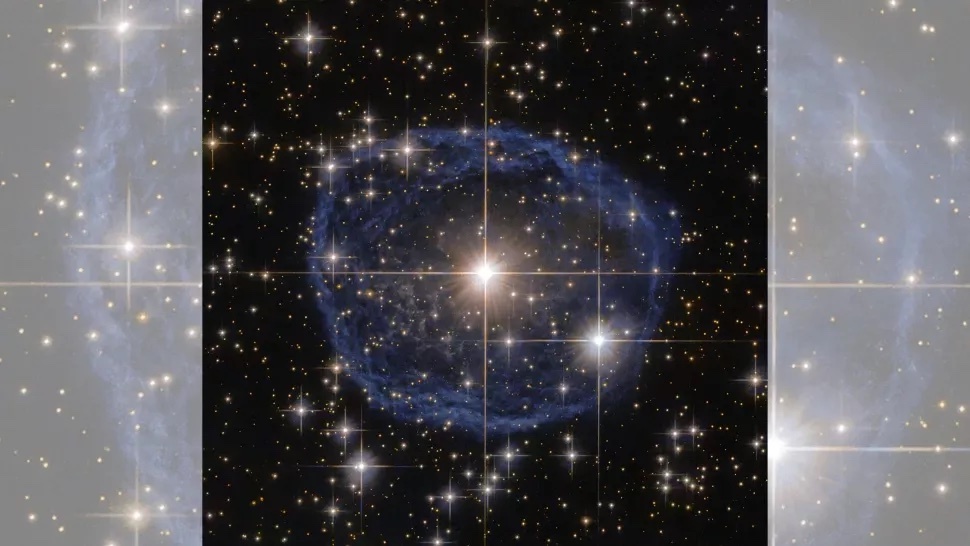8.08.2023
Meet the 'bubbletrons' — theoretical particle accelerators that may have helped build the universe as we know it.

Hubble spies a giant gas bubble in space. (Image credit: NASA Goddard)
The extremely early universe featured the most cataclysmic, transformative and energetic events that ever occurred. Driving these energies was the expansion of the cosmos and the resulting fragmentation of the fundamental forces of nature.
And in that fragmentation, massive bubbles may have emerged and collided with each other, powering up energies that would put to shame even our most advanced human-made particle accelerators, new research published June 27 on the preprint database arXiv suggests.
Those awesome energies could have flooded the universe with dark matter particles, microscopic black holes, and much more, the researchers wrote. And the name of those ultra-energetic, early universe structures? Meet the "bubbletrons."
Bubbles of chaos
The four fundamental forces of nature — electromagnetism, strong nuclear, weak nuclear and gravity — are not always so different. At high energies, these forces begin to merge. We can already detect this in our most powerful particle colliders, where electromagnetism and the weak nuclear force merge into a united "electroweak" force. While not proven, physicists strongly suspect that at even higher energies the other forces also merge into a single, unified force.
But the only time the universe had the energies needed to do this was less than a second after the Big Bang. As the cosmos cooled and expanded from that early state, the forces split off from each other in titanic moments of phase transition. This splitting might have been smooth and serene, like the transition of ice melting into water, or incredibly violent, like the transition of water boiling into vapor.
If the transitions were violent, then the universe could have been briefly filled with gigantic bubbles, the new research suggests. Outside these bubbles, the unified forces remained. But inside the bubbles, the cosmos would have been completely different, with the forces split off from each other. Eventually these bubbles would have expanded and collided, completely converting the universe into the new reality.
But these bubbles wouldn't just have come and gone without leaving a trace, fizzing like an opened soda can. The bubbles would have carried truly enormous amounts of energy — orders of magnitude more energy than any human-made or natural process in the present-day cosmos.
The expanding edges of the bubbles could accelerate any nearby particles to incredibly high speeds. Those particles would then slam into others, just like they do in laboratory particle accelerator experiments, creating a shower of released energy and new particles. Additionally, the bubbles would have eventually merged, becoming another source of particle creation.
The researchers discovered that these bubbletrons could have reached the energies necessary to trigger the formation of hypothetical dark matterparticles. These particles would have enough mass and abundance to explain the observed amount of dark matter in the universe, according to the team's calculations. They could also have been factories of much more exotic objects, like microscopic black holes that immediately evaporated, adding their energy to the mix.
Most importantly, the researchers discovered that the expansion and collision of the bubbletrons would have created a cacophony of gravitational waves. Those gravitational waves would ring the whole universe like a gigantic bell and persist in the cosmos today, billions of years later.
Recent research points to a universe awash in a background hum of gravitational waves. While most of the waves are likely due to colliding supermassive black holes, some of them might be relics from processes in the extremely early universe, like the rise and fall of bubbletrons. The researchers pointed out that future analysis with pulsar timing arrays, as well as upcoming gravitational waves detectors like LISA and the Einstein Telescope, might be able to find direct evidence for the significant — but fleeting — existence of the bubbletrons.
Quelle: SC
